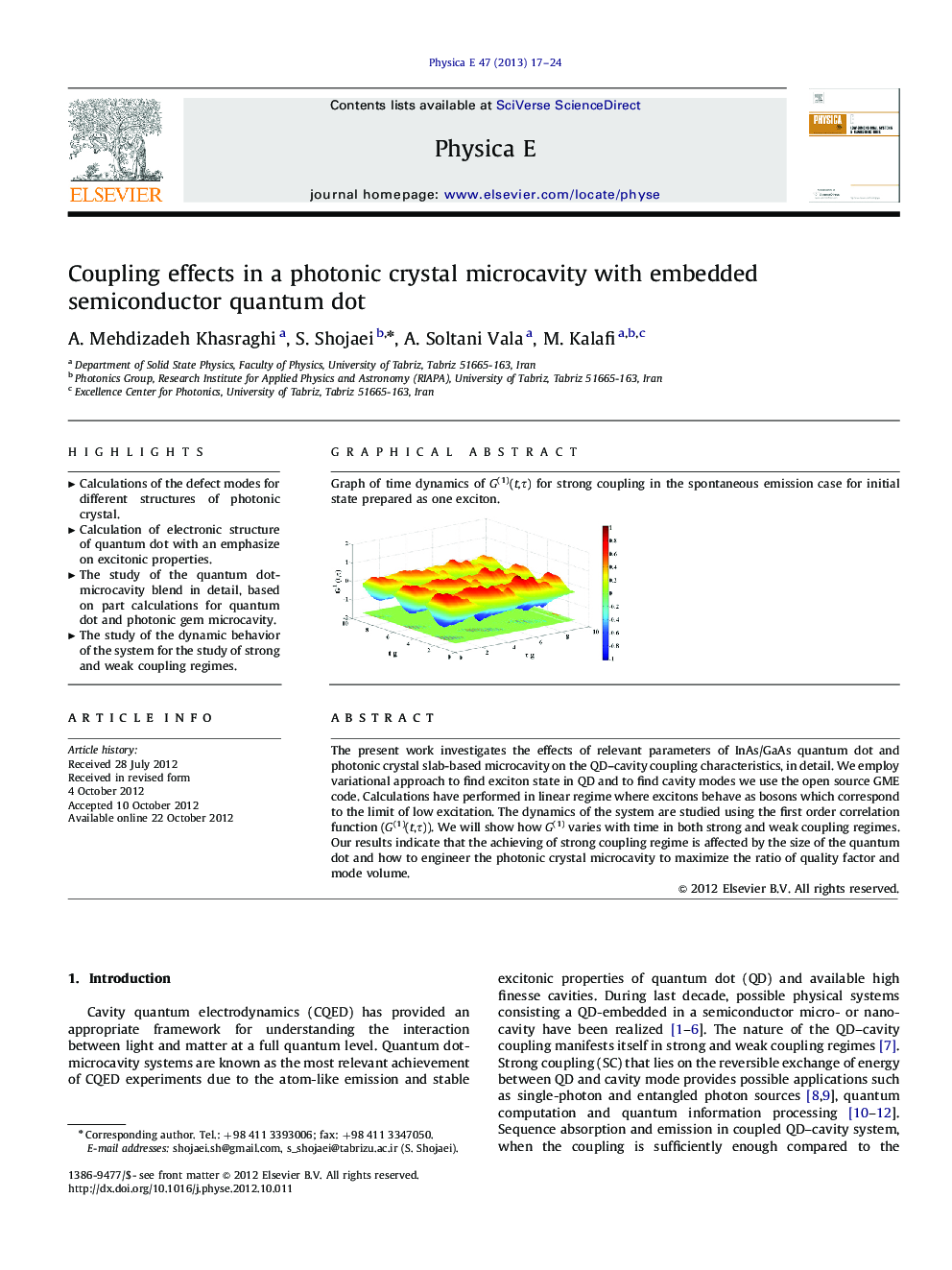| Article ID | Journal | Published Year | Pages | File Type |
|---|---|---|---|---|
| 1545065 | Physica E: Low-dimensional Systems and Nanostructures | 2013 | 8 Pages |
The present work investigates the effects of relevant parameters of InAs/GaAs quantum dot and photonic crystal slab-based microcavity on the QD–cavity coupling characteristics, in detail. We employ variational approach to find exciton state in QD and to find cavity modes we use the open source GME code. Calculations have performed in linear regime where excitons behave as bosons which correspond to the limit of low excitation. The dynamics of the system are studied using the first order correlation function (G(1)(t,τ)). We will show how G(1) varies with time in both strong and weak coupling regimes. Our results indicate that the achieving of strong coupling regime is affected by the size of the quantum dot and how to engineer the photonic crystal microcavity to maximize the ratio of quality factor and mode volume.
Graphical abstractGraph of time dynamics of G(1)(t,τ) for strong coupling in the spontaneous emission case for initial state prepared as one exciton. Figure optionsDownload full-size imageDownload as PowerPoint slideHighlights► Calculations of the defect modes for different structures of photonic crystal. ► Calculation of electronic structure of quantum dot with an emphasize on excitonic properties. ► The study of the quantum dot-microcavity blend in detail, based on part calculations for quantum dot and photonic gem microcavity. ► The study of the dynamic behavior of the system for the study of strong and weak coupling regimes.
